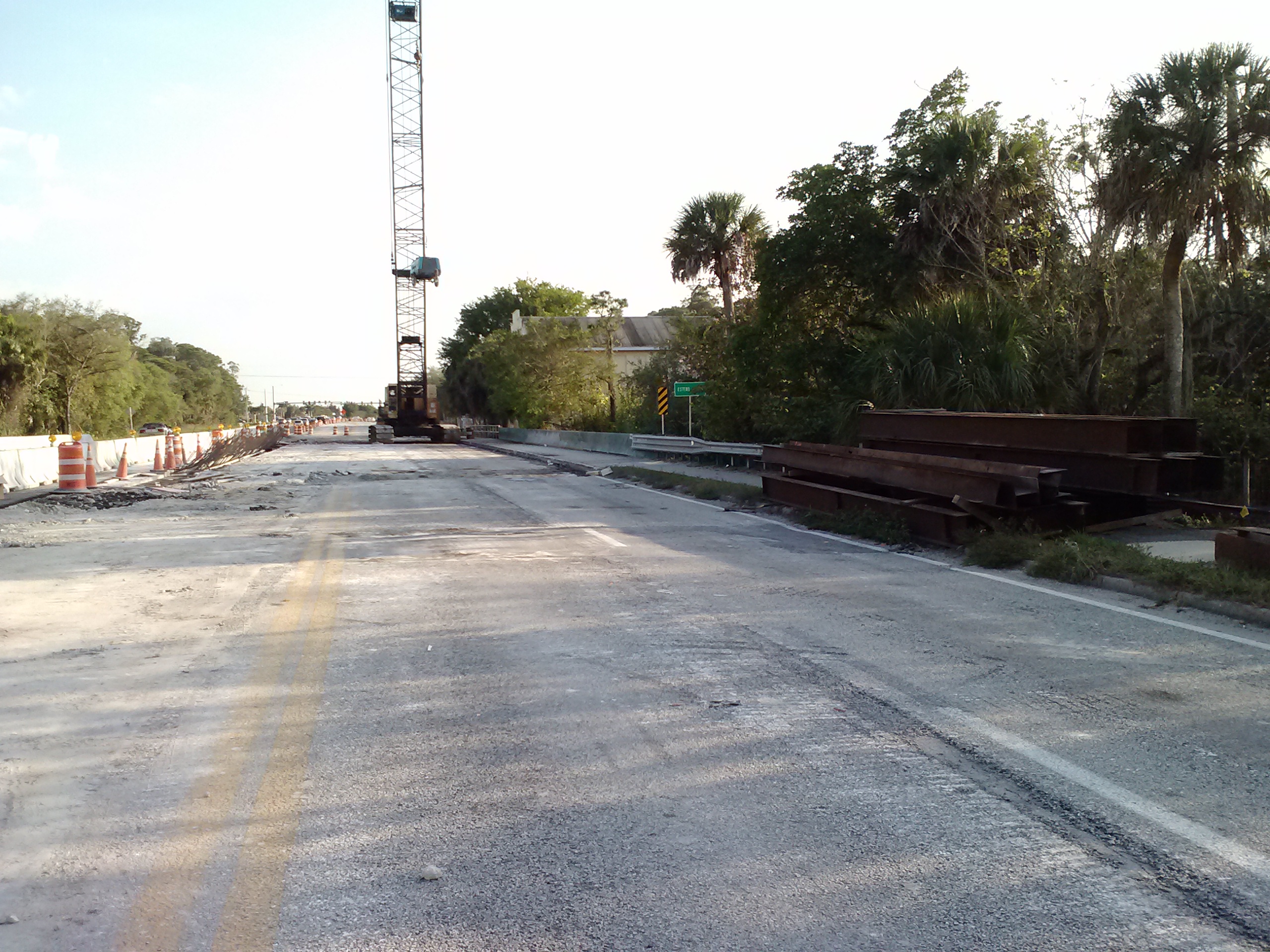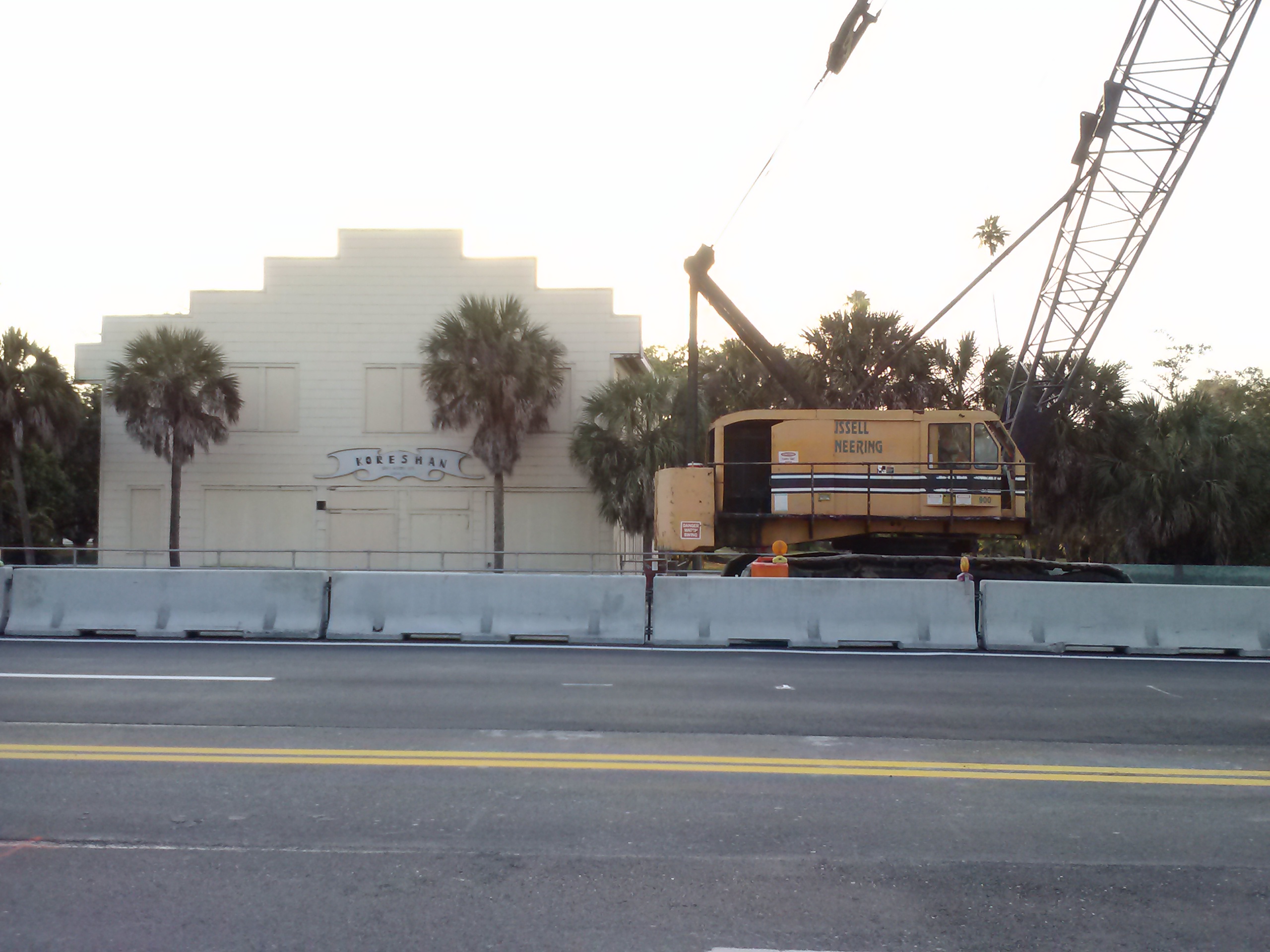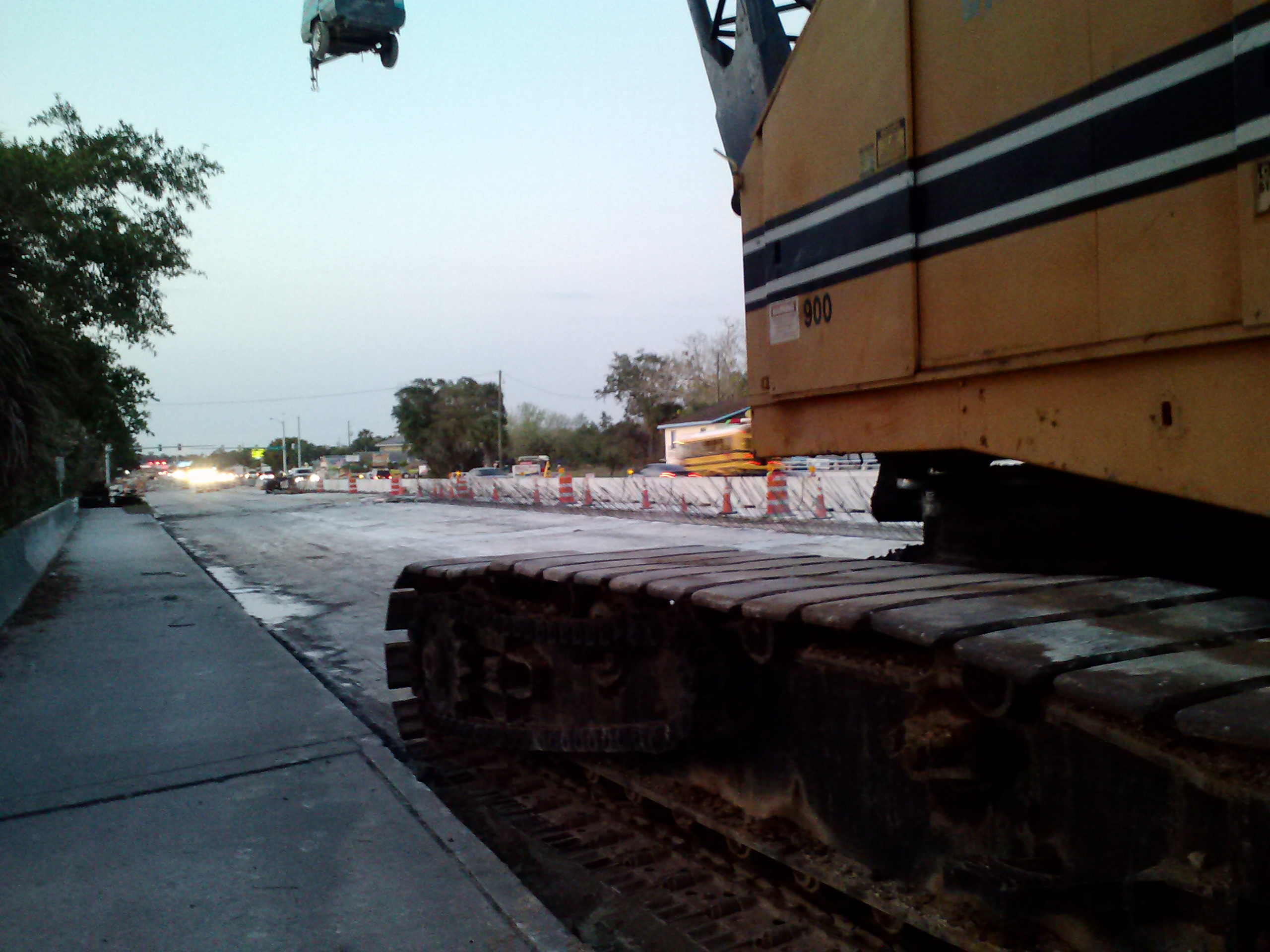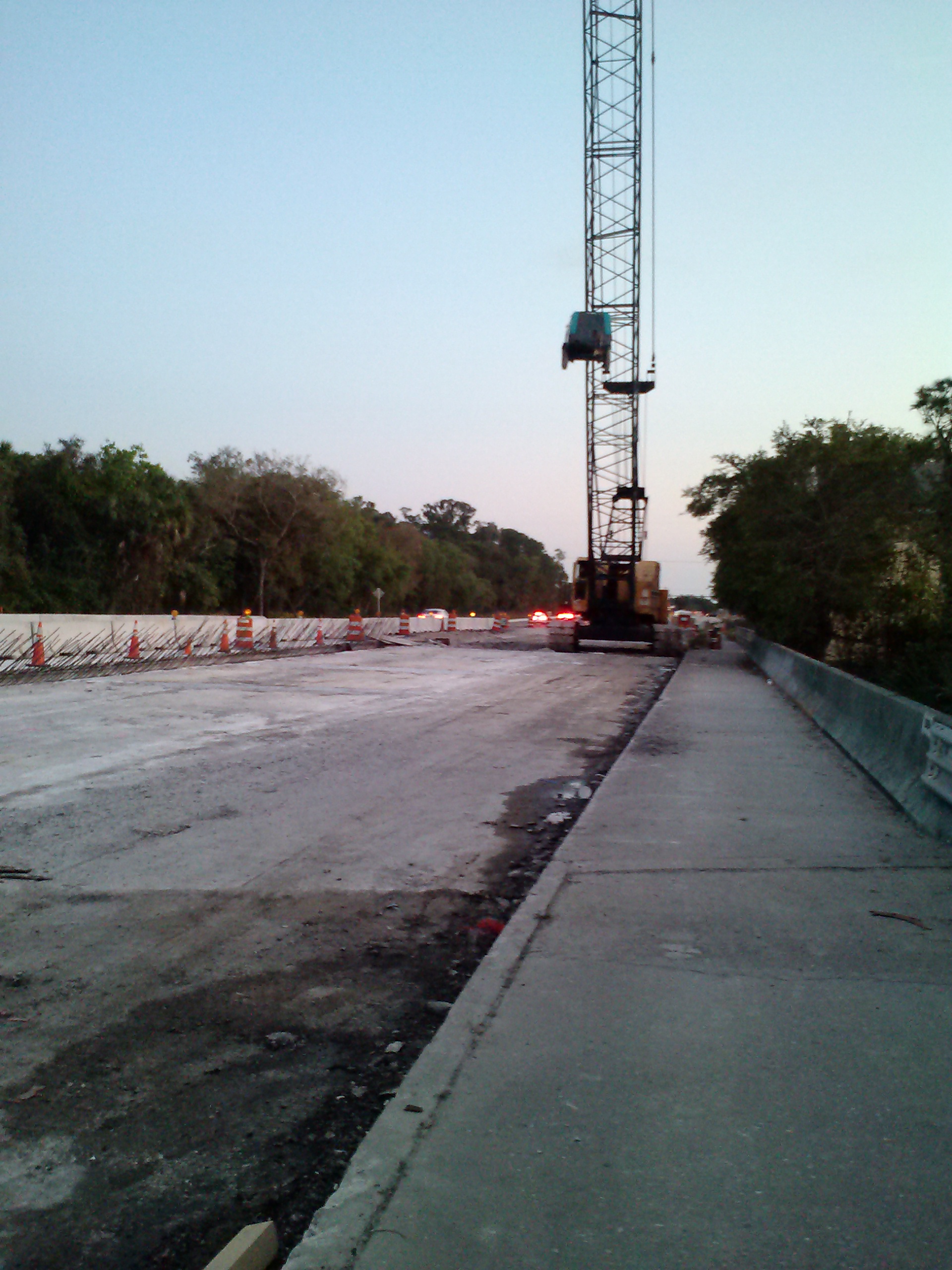We have featured, in the past, articles about the road construction on US-41, in December 2011 and again in January 2012.
The modern day equivalent of the saga of US-41 continues. The highway that runs in front of the Historic Site has seen a lot of change over the years. From a dirt path, to a two lane highway, a four lane highway and now a six lane highway. The Koreshan Unity lobbied hard for the four laning, despite the presence of the “Historic District”. I doubt that the highways will ever get any bigger than six lanes unless the east side of the highway and all that property, including the present day “College of Life” building are all removed.The American Eagle, in October 1990 featured an article about the Tamiami Trail Blazers, which included four Koreshans among their ranks. Here is the article:
Construction of Tamiami Trail
Cost Millions in the ’20s;
Put South Florida on the Map
by Sue RoperThe historic Tamiami Trail runs between the Koreshan State Historic Site and the Koreshan Library/Museum at Estero. Most Florida tourists and new residents call it U.S. 41 and in Fort Myers, it’s Cleveland Avenue.
is best known as U.S. 41, but long-time Floridians call it “The Trail.” It is one of the State’s most important highways and opened up south Florida to thousands of new residents and the tourist industry. Many Florida visitors by-pass it for 1-75, a few miles to the east, to reach “Alligator Alley,” a stark road that cuts a straight path across the Everglades from Naples to Dade County.
The only U.S. highway between Tampa on Florida’s west coast and Miami on the east coast,Trail Touches Base.
The Trail meanders near the coast from Tampa through busy Bradenton, Sarasota, Punta Gorda — rails end when the Koreshans came to Estero in -1894 — Fort Myers and Naples where it turns sharply east on its way to Miami. Near its final destination the Trail makes a wide bend because, according to legend, it was built from Naples east and Miami west, and the two ends would have bypassed each other. First talked about in 1915 by a Captain J.F. Jaudon of Miami, president of the Chevelier Corporation, owner of vast acreage in northern Monroe County, the road was delayed by World War One.No Survey Here
Indians and U.S. soldiers in the Seminole Wars had trod was a contemporary version of “Wagons, Ho!” Politics and wealthy individuals such as Barron Collier (for whom Collier County is named) entered the picture with visions of cash registers ringing in” their heads. But it wasn’t until April 4, 1923 that a cavalcade of ten cars (nine were Fords) left Estero on their epic journey across the ‘Glades.
Jaudon had proposed a road across the trackless Everglades — haunt of Indians, Bald Eagles, panthers, bears and exotic birds. The thought stirred the imagination — the idea of driving a car where onlyTrail Blazers
They called themselves “The Trail Blazers” because the proposed road had been termed the Tamiami Trail since 1917. The adventurers ranged from 15 to 65 years of age and em-ployed two Seminole Indian guides to lead them across the wild Everglades. They started from Tampa and their arrival in Fort Myers on April 3 was duly celebrated. William R. Spear, editor emeritus of The Fort Myers News-Press, was at the time a young reporter for the Fort Myers Tropical News (an early local newspaper) and covered the gala event.Koreshans Made Trek
(the only Trail Blazer to keep a daily record of their cross-the-Ever-glades odessy), Alfred Christensen, Charles Hunt and Allen Andrews, editor of The American Eagle, the Koreshan newspaper. Lewis and his wife, Anna, later retired to the little white bungalow just north of the Koreshan Library/Museum. Their harrowing journey took much longerthan anticipated, ending April 21 in Miami. The Trail Blazers proved an apt name — although they encountered none of the hazards of the wagon trains crossing the waterless plains and rugged mountains to colonize the American West.
On April 4, they picked up four men at Estero. They were: Koreshans Frank S. LewisMud, Bugs and Heat
What they faced, according to Lewis’ diary, published in the April 22 Miami Herald, was mud and mire, fire, heat and bugs, cypress swamps and rough palmetto prairies. They became lost and were reduced to searching for pot- able water and hunting wild game. A survey crew from a lumber camp rescued them and brought supplies and large cans of gasoline. By this time, the trek had attracted the national news media, and later in their trip, a plane sent by the Miami Chamber of Commerce dropped welcome bread and canned goods to the hungry pioneers.The Miami Herald Reports
But they drove on, braving the swamps and heavy marl until they reached the Miami end of the grade. Finally, according to Miami Herald files, “seven muddy Model T’s chugged down Flagler Street (a major city street) to a reception at the waterfront park. They were singing their theme song to the tune of “Tipperary” — beloved of the British Tommy — but with these words:
‘”Tis a long way to Miami
It’s a long way to go.
It’s a long way to Miami, o’er a trail we did not know.
Goodbye Fort Myers, Estero and
Naples, too.
‘Tis a long way to Miami,
But we went right through!”Garden Club Celebration
In 1982 Periwinkle Garden Club, Fort Myers, re-enacted a portion of the local celebration. Antique cars paraded down the Trail from the Fort Myers Historical Museum (in the old downtown railroad station) to the just-opened Bell Tower Mall at Daniels Road, access to 1-75 from the Tamiami Trail. The club dedicated a large, elevated historical marker in the presence of Grover Hackney of Tampa — the last surviving “Trail Blazer” and grand marshall of the parade. A host of local and state dignitaries and garden club officials from Miami and Tampa were special guests. A congratulatory telegram from President and Mrs. Ronald Reagan was read. At the gala reception which followed, Hackney told many a tale and sang the Trail Blazer song for the invited guests.62 Years Ago
Spear, who spoke during the ceremonies, said, “It is difficult today (1982) to conceive that as late as 1920 well within the lifetime of older inhabitants, there was no road from Punta Gorda to Fort Myers or to Naples and Miami. The Trail, as we know it today, was literally blasted from the floor of the Everglades with 20-tons of explosives at an estimated cost of $13 million in 1920 dollars.Two Miles A Month
According to Spear, who was assigned to cover the early construction of the Trail: “Road building in the ‘Glades re-quired drilling holes for dynamite in the solid underlying rock; loading and setting the blast; dredging up the loosened rock to form a grade; then leveling, scarifying and paving this grade. The maximum rate of progress was two miles per month. One of the “walking dredges” used in the Trail’s construction is at the Collier-Seminole State Park just east of Naples. A Park Ranger who has studied the building of this road has a talk with some very interesting old slides which he showed at a Monday Morning Conversation at the Koreshan Library/ Museum recently.
No one is singing here today. We are waiting for this latest construction to finally end.




